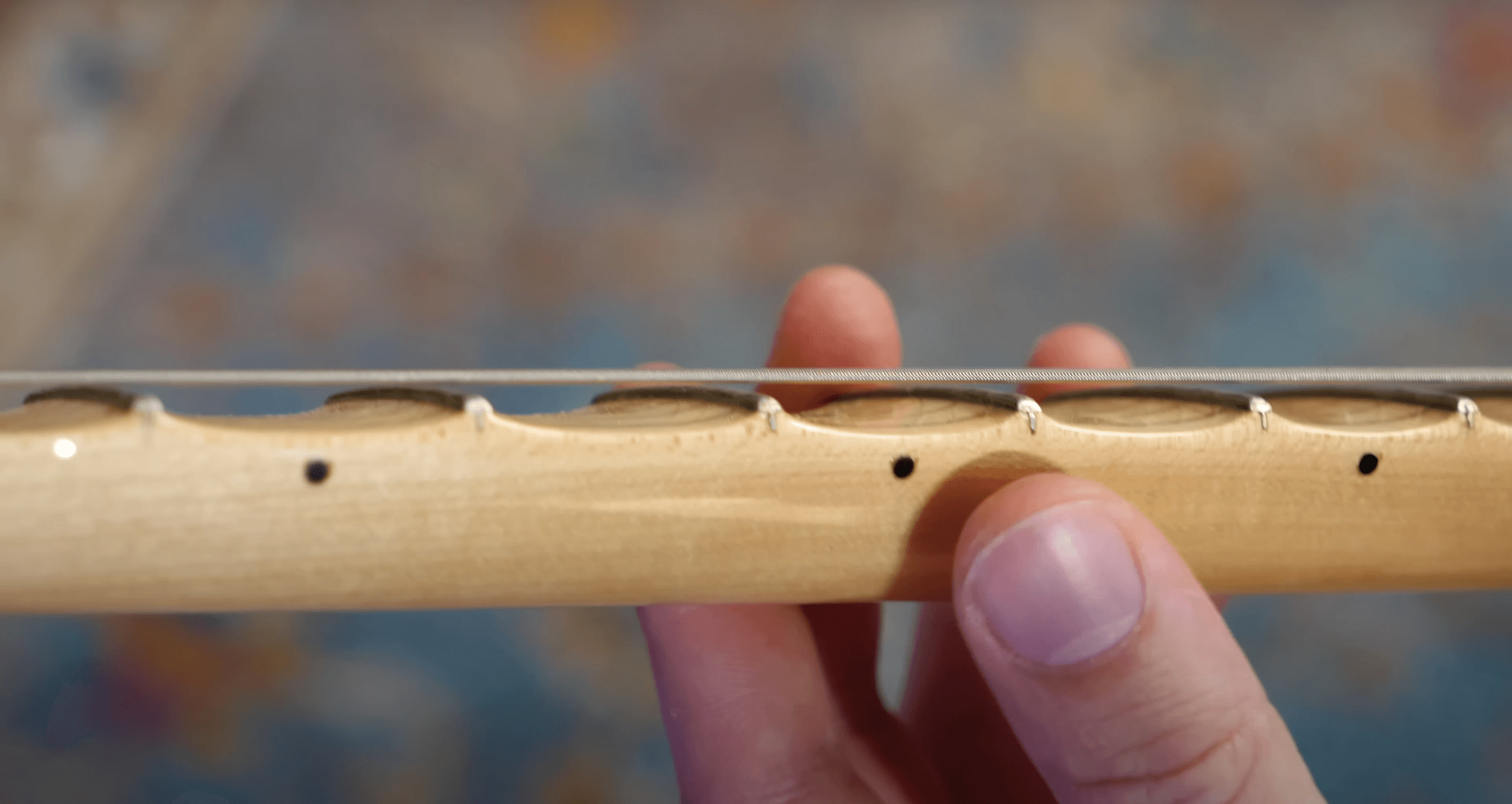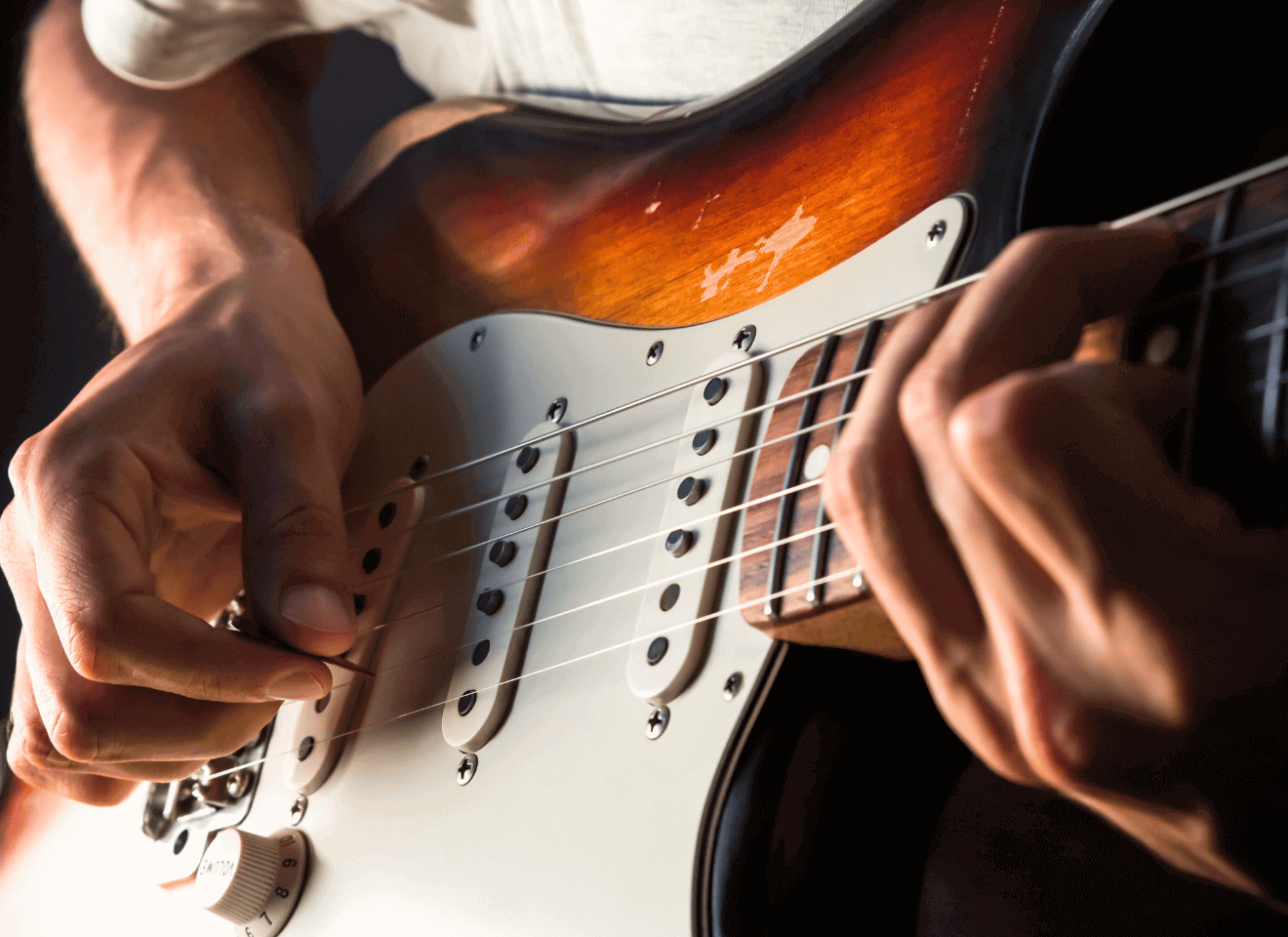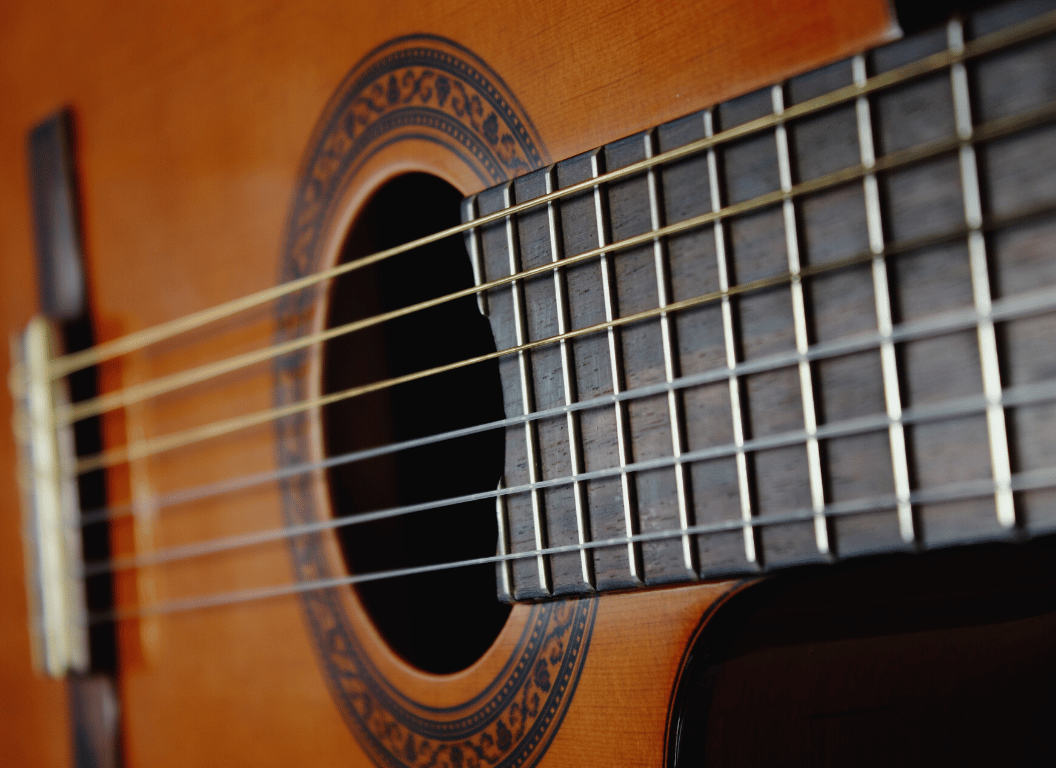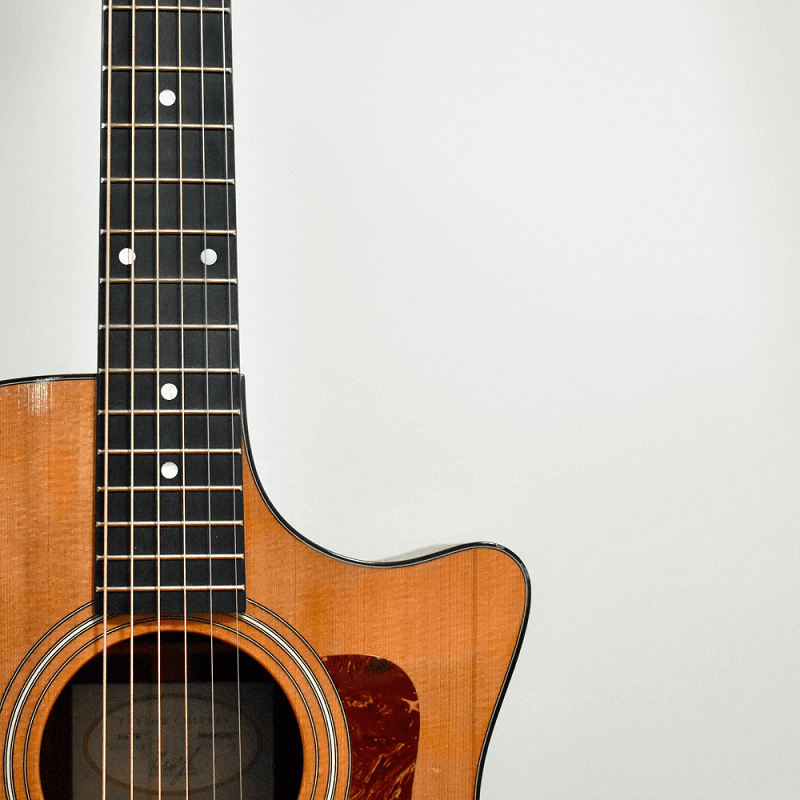Many people ask themselves whether scalloped necks are any good or not.
The answer might vary from person to person, but in general, scalloped necks can offer a few benefits that might be worth considering.
In today’s article, we’ll take a closer look at some of these benefits and see if scalloped necks are really worth it.
On top of that, we’ll also dispel some of the myths surrounding scalloped necks and answer some of the most common questions about them.
So, without further ado, let’s get started.
Table of Contents
- Are scalloped necks any good?
- Advantages of scalloped fretboards
- Disadvantages of scalloped fretboards
- What exactly is a scalloped neck?
- Do scalloped fretboards help you play faster?
- Can a scalloped fretboard affect tone?
- Can you scallop a guitar neck that’s already been made?
- How much does it cost to scallop a fretboard?
- How many fretboards should you scallop?
Are scalloped necks any good?
Scalloped necks are an excellent choice for those who want a stylish and unique look for their guitar. They offer both visual and sonic benefits that make them an excellent option for any player. In terms of visual benefits, scalloped necks have this cool, retro look that can really add a lot of style to your guitar. As for sonic benefits, scalloped necks can offer a brighter and more articulate sound since the strings are able to vibrate more freely.
In general, scalloped necks are a great choice for any player who is looking for something different.
But here’s the thing, there might be better options for some.
This is because scalloped necks can be a bit more challenging to play, especially for beginners.
So, if you’re starting out, you might want to go with a traditional neck style.
On the other hand, if you’re an experienced player looking for something unique, then scalloped necks might be the way to go.
Let’s take a closer look at some of the pros and cons of scalloped necks to help you decide if they’re right for you.
Advantages of scalloped fretboards
There are several advantages that come with scalloped fretboards; here are some of the most notable ones:
1. Improved vibrational properties
One of the most significant advantages of scalloped necks is that they have improved vibrational properties.
This is because the strings are able to vibrate more freely, which results in a brighter and more articulate sound.
Having more space between the frets and the strings also allows for more sustain, which is always a plus.
But overall, the improved vibrational properties and all of its byproducts are the biggest advantages of scalloped necks.
2. Better note separation when playing
Another big advantage of scalloped necks is that they offer better note separation when playing.
This is because the strings are further apart, which makes it easier to play single-note lines without having the notes bleed into each other.
If you’re a lead player who likes to play fast and complex solos, then this can be a huge advantage.
Having better accuracy and note separation can also be helpful for rhythm players who want to make sure that each note is heard clearly.
I encourage you to watch this YouTube video by Gary Simon, in which he plays a scalloped neck for the first time:
He mentions how the scalloped frets weren’t too hard to play and he had no issue in terms of maintaining rhythm and playing chords.
On the other hand, he had some issues with the high E string, in which it kept slipping off the neck everytime he did any sort of pull-offs, or downward bends.
I think is very interesting to watch, since he purposely didn’t play it before and recorded his raw/real reaction to it.
3. It can help you improve technique and speed
Another big advantage of scalloped necks is that they can help improve your technique and speed.
This is because the extra space between the frets and the strings makes it easier to reach around and grab notes.
Also, players tend to attack the strings with more force when playing on scalloped necks, which can help improve your playing overall.
4. A unique look that’s hard to replicate
Scalloped necks have a shape that’s really unique, and it’s something that you won’t find on many other guitars.
This can really help your guitar stand out from the crowd, and any non-guitarists will definitely be impressed with it.
It’s very easy to notice, and it’s one of the first things that people will see when they look at your guitar.
5. Have an easier grip on the strings during bending
Your fingertips will slide much more comfortably under the strings, which is going to give you more comfort in the execution of bending.
This is because you’ll have more space to grip the strings, which is a very important consideration when you’re bending.
But be careful, though, because this can also make it easier to over-bend the strings and break them.
Disadvantages of scalloped fretboards
Even though there are several advantages that come with scalloped fretboards, there are also some disadvantages that you should be aware of.
Here are some of the most notable ones:
1. Not as comfortable for some players
One of the biggest disadvantages of scalloped necks is that they’re not as comfortable for some players.
This is because the shape can make it a bit more challenging to grip the neck, especially for those with smaller hands.
Other people just don’t like the sensation of having their fingers on the scallops and prefer a more traditional neck shape.
2. Not as widely available as other neck shapes
Another big disadvantage of scalloped necks is that they’re less widely available than other neck shapes.
This means that you might have a more challenging time finding the perfect guitar if you’re set on getting a scalloped neck.

And even if you do find one, it’s likely that it’s going to be more expensive than a guitar with a traditional neck shape.
In any store that you visit, you’ll be lucky to find more than a handful of models with scalloped necks.
3. They’re not for everyone
At the end of the day, scalloped necks are not for everyone.
Some people love them and swear by them, while others find them to be uncomfortable and prefer other neck shapes.
It really comes down to personal preference, so it’s important to try out a few different neck shapes before settling on one.
Even if it’s cool to have a scalloped neck, it’s not worth it if you’re not comfortable playing on it.
What exactly is a scalloped neck?
A scalloped neck is a guitar neck that has been carved out in a specific way so that the strings and the fretboard sit slightly higher than usual.
This results in a neck that’s thinner and lighter, and it also offers improved vibrational properties.

Scalloped necks have been around for quite a while, but they really started gaining popularity in the 1970s when players like Eddie Van Halen, Steve Vai, and many others began using them.
Nowadays, scalloped necks are still quite popular among many players, although they’re not as widely available as traditional necks.
In other words, in your local stores, you might need help finding more than a handful of options.
Fortunately, there are many online stores that offer them, so you should be able to find what you’re looking for if you’re willing to do a bit of research.
Do scalloped fretboards help you play faster?
One of the most common questions about scalloped fingerboards is whether or not they help you play faster.
The truth is, a scalloped fingerboard can offer some benefits in terms of technique and speed, but it’s going to take a lot of work to make you a faster player.
If you’re struggling with your speed, then a scalloped fingerboard is not going to be a miracle cure.
That being said, if you’re already a reasonably fast player, then a scalloped fingerboard can help you take your playing to the next level.
This is because the improved vibrational properties and note separation that comes with scalloped necks can make it easier to play complex passages at high speeds.
On the other hand, if you’re a beginner, then you should steer clear of scalloped necks, at least for now.
Then, once you’ve developed your technique and speed a bit more, you can always come back and give them a try.
Can a scalloped fretboard affect tone?
A scalloped fretboard can affect tone, but it’s not going to be a night-and-day difference.
In most cases, the difference will be quite subtle, and most people probably wouldn’t even notice it.
With that said, if you’re a very picky player or you have very sensitive hearing, then you might be able to hear a slight change in tone.
Generally speaking, scalloped necks tend to create a brighter, more open sound.
So, if your guitar has a dark or muddy tone, then scalloping the fretboard might help to brighten it up.
On the other hand, if your guitar already has a bright tone, then scalloping the fretboard might make it sound a bit too thin and harsh.
It’s really a matter of personal preference, and you’ll have to experiment to see what you like best.
In the end, it’s important to remember that scalloping a fretboard is not going to magically transform your guitar into a completely different instrument.
It’s simply a way to change the tone slightly and give you a bit more control over your sound.
Can you scallop a guitar neck that’s already been made?
Yes, it is possible to scallop a guitar neck that’s already been made, but it’s not something that we would recommend doing unless you’re an experienced luthier.
This is because the process of scalloping a guitar neck is quite delicate, and if done wrong, it can ruin the neck completely.
So, unless you’re confident in your ability to do it correctly, we would advise against trying it.
This is what it would look like when you scallop a fretboard:
Now, if you really want a scalloped neck and you don’t want to take the risk of doing it yourself, then your best bet is to buy a guitar that already has one.
This way, you can be sure that it’s been done correctly, and you won’t have to worry about ruining your guitar.
Either way, I would check with a professional before making any decisions.
How much does it cost to scallop a fretboard?
The cost of scalloping a fretboard will vary depending on who is going to do it and how many frets need to be scalloped.
Generally speaking, you can expect to pay anywhere from $50 to $200 for the service.
Of course, this is just a rough estimate, so I would check with your local luthier or guitar shop to get a more accurate quote.

Some people charge per fret, while others charge a flat rate for the entire neck.
Either way, it’s usually not too expensive, especially when you compare it to the price of a new guitar.
For example, a decent-quality scalloped neck guitar can cost upwards of $1,000.
But if you’re on a budget, then scalloping your own fretboard is a great way to get the same effect for a fraction of the price.
How many fretboards should you scallop?
The number of fretboards you scallop will depend on your playing style and what you’re looking to achieve.
If you’re a very fast player who plays in all fretboard positions, then consider scalloping all of the fretboards on your guitar.
This will give you the best possible note separation and vibrational properties, which can be helpful when you’re playing complex passages.
On the other hand, if you’re not too concerned about note separation, then you might want to only scallop a few of the fretboards.
A good rule of thumb is to start with the lower frets and work your way up.
This way, you can always add more scallops later if you feel like you need them.
If you find yourself playing in a particular fretboard position a lot, then you might want to consider scalloping that area to make it more comfortable.
For example, if you’re a lead player who spends a lot of time in the upper frets, then scalloping the higher frets might be a good idea.
In the end, it’s really up to you, and there’s no right or wrong answer; it’s just a matter of experimentation and finding what works best for you.

More than 10 years of experience playing and writing about guitars! When not writing, I can be found strumming away some Johnny Cash tunes. Favorite all time guitar is the Gibson Les Paul. #TeamGibson




